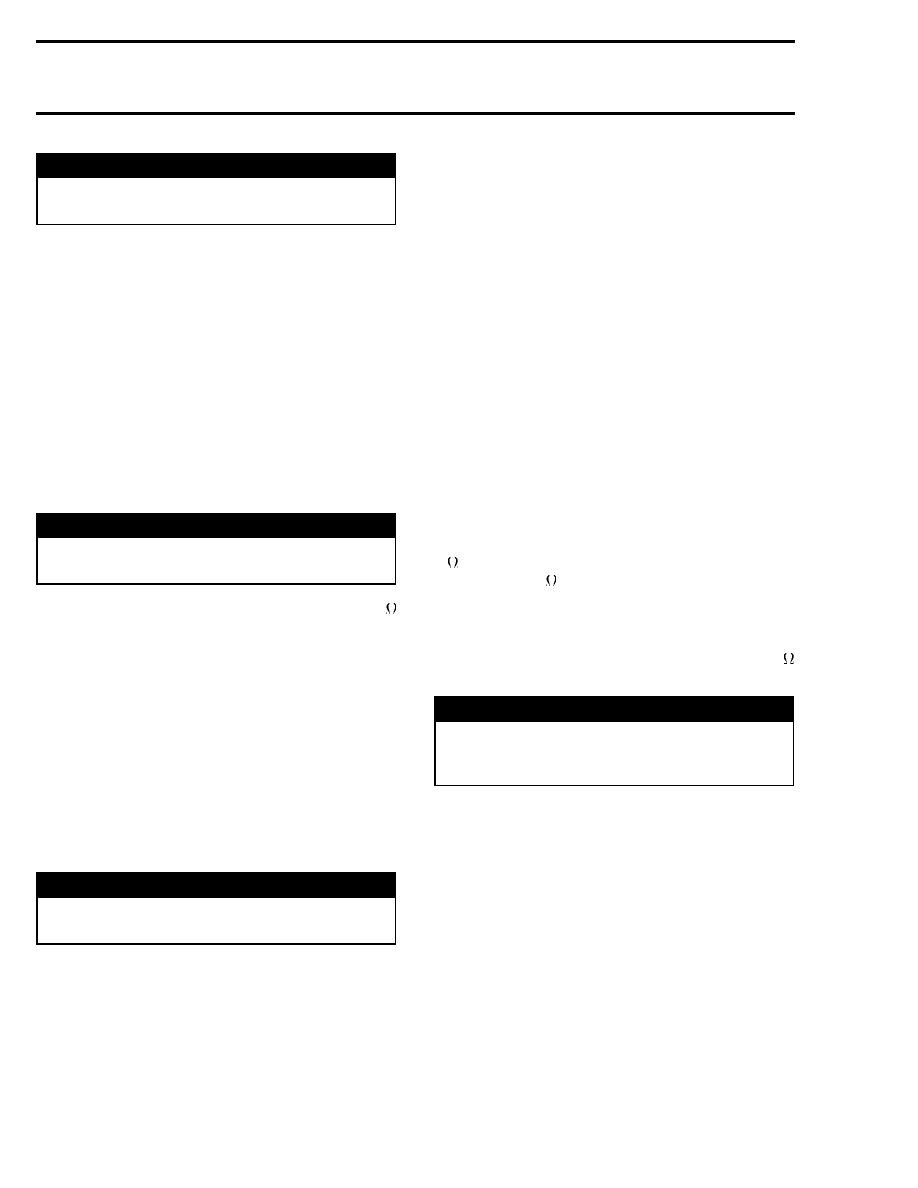Snowmobile Ski Doo REV SERIES (2006 year). Instruction - part 70

Section 06 ENGINE MANAGEMENT (SDI)
Subsection 03 (COMPONENT INSPECTION, REPLACEMENT AND ADJUSTMENT)
WARNING
Always respect the polarity when connecting
the capacitor.
Wait 5 minutes, then measure capacitor voltage.
It must be within 1 V maximum of battery voltage.
If in doubt, proceed with the following residual
voltage test.
Residual Voltage Test
Connect a 12 V test lamp to capacitor terminals
during a complete minute to discharge capacitor.
Connect a switch (in OFF position) between a 12 V
battery positive post and the capacitor positive
post. Connect the battery negative post to the
capacitor negative post. Turn on the switch for 2
seconds. Disconnect the capacitor from the bat-
tery. Note battery voltage.
WARNING
Always respect the polarity when connecting
the capacitor.
Connect a switch (in OFF position) and a 300
5 W resistor to the capacitor. Turn on the switch
for 12 seconds ± 1 second of discharge.
Residual voltage after 12 seconds ± 1 second of
discharge must be above 5 volts.
Installation
Connect a 12 V test lamp to capacitor terminals
during a complete minute to discharge capacitor.
Make sure 30 A fuse is removed.
Install the capacitor.
Make sure to connect BLACK wire to negative ter-
minal and RED/WHITE to positive terminal.
WARNING
Always respect the polarity when connecting
the capacitor.
Install the 30 A fuse.
ENGINE START/RER SWITCH
VERIFICATION
All Models
A quick operation test can be done using the ve-
hicle communication kit (VCK) with the B.U.D.S.
software, using the Monitoring section. Press
the START/RER button and look at the START/RER
button LED. It should turn on, indicating the start-
ing system is working on the input side of the
starting system (START/RER button, ECM and
wiring). If so, you know now the problem is
on the output side of the starting system (ECM
output signal to starting solenoid, wiring harness
going to the solenoid and starter motor. Other-
wise, check the input side as follows.
Test corresponding fuse, relay and wiring.
Disconnect the two connectors of the steering
harness.
Measure the resistance of the two wires on the
small connector (BEIGE and BLACK/BROWN) for
0
. Depress start button and the reading should
change from 0
to infinitely high.
Release the start button and measure the resis-
tance between pin 2 (BEIGE wire) of the small
connector and pin 6 (RED/BROWN wire) on the
big connector for infinitely high resistance to 0
while the start button is depressed.
WARNING
Always respect the wire position when con-
necting the switch. Refer to the wiring dia-
gram.
Test continuity of circuit B-19. If it is good, try a
new ECM. Otherwise, repair harness/connectors.
RER Operation
When RER works erratically or if engine idle slow
down then engine stalls, do the following.
– Check engine compression. A low compres-
sion engine may result in RER working erratical-
ly making you think the problem is an electronic
problem.
276
mmr2005-081